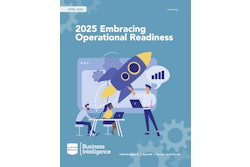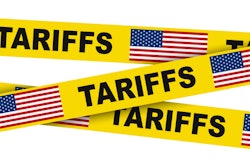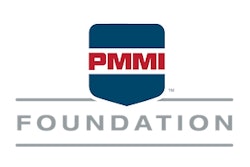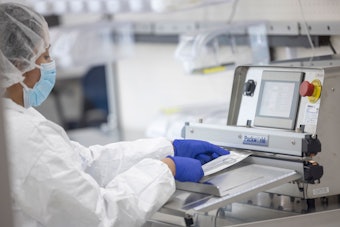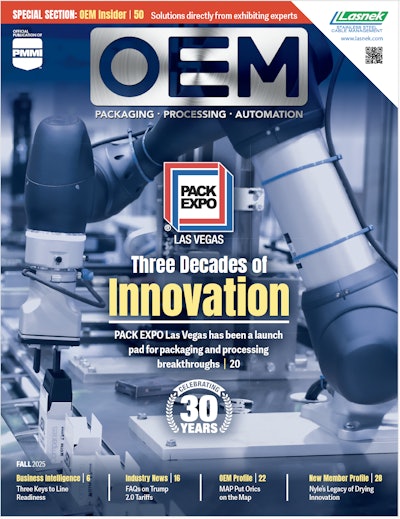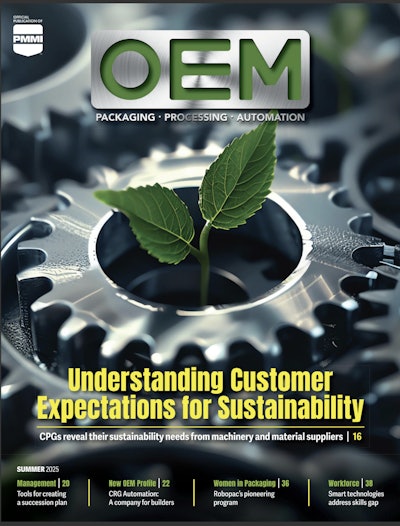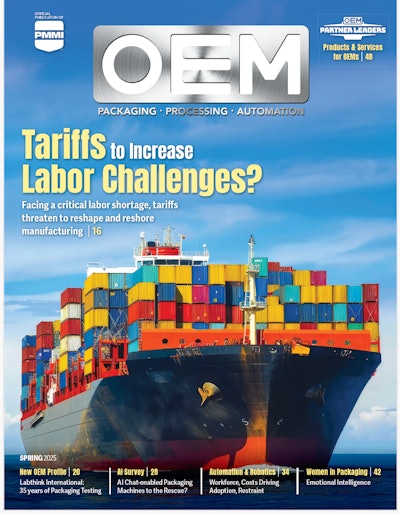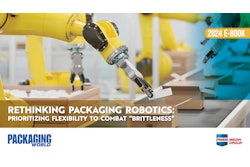Eric Klingenberg, lead, Material Science at Mars, offered a pragmatic view of how major brands are navigating the future of packaging innovation at the intersection of sustainable packaging and human health and safety at today's Rethinking Materials. Joined by Wes Carter of materials supplier/converter Atlantic Packaging and Adrian Horotan of VC Safer Made, Klingenberg focused on scientific diligence, collaborative supply chains, and the constructive role regulation can play in shaping progress.
For Klingenberg, chemical safety and material vetting should not be treated purely as risk management.
“We consider ourselves an agricultural company—our products become food. So safety is critical. As we evaluate new packaging materials, we ask: What are the raw inputs? Where do they go? Will they biodegrade safely? Will they actually be accepted in composting systems? That takes real science, and we invest heavily to get it right before launching anything.”
Mars’s due diligence, he explained, doesn’t stop at suppliers or converters—it now extends deep into the waste stream.
“You have to put on your boots and go around the composting facility,” he said. “The last thing we want is to cause a problem downstream. We talk directly with waste operators: Is this recyclable? Compostable? We don’t want any surprises.”
Working Downstream: The Waste System Matters
Klingenberg emphasized that Mars has shifted from a “hand-off” supply chain to a hands-on, end-to-end approach—starting earlier in material sourcing and finishing with infrastructure feasibility.
“In the past, we worked with converters who came with solutions. We’d accept or reject. Now we’re partnering upstream and downstream—raw material suppliers, yes, but also waste systems. We’re asking: What data exists? What health and environmental information is there on new materials? If we don’t know, we slow down and do our own science.”
That diligence, he acknowledged, can be frustrating for startups wanting to move fast. But the payoff is stronger long-term trust—and fewer “regrettable substitutions.”
Is Regulation a Spark or a Shackle?
While all three panelists agreed that safer packaging is essential, their views diverged slightly on the role of regulation. Carter described regulation as necessary but coequal at best to moral and consumer-driven leadership.
“For me, it starts with ethics,” Carter said. “I don’t want to be responsible for putting toxic materials into the world. Regulation plays a part, but consumers are the biggest driver of change.”
Klingenberg offered a slightly different lens:
“Regulation creates the spark for innovation. Without it—without saying no to something—we don’t create the urgency to change, especially for big industries.”
He pointed to the evolving regulation around PFAS as a positive example—pushing brands to reassess not just what they use, but why.
“We’re asking: Do we actually need this performance level? Maybe we’ve been using it because it was cheap—not because it was necessary. Regulation helps us challenge those assumptions and find better, more recyclable alternatives.”
Carter concurred on the role of policy, describing regulations as “guardrails for innovation” that help direct and constrain development without stifling it. It was a nuanced difference—not a disagreement, but a difference of emphasis between internal values and external frameworks.
VCs Investing in Information and Transparency
Adrian Horotan brought a capital and startup lens to the conversation. He highlighted three persistent gaps: lack of scientific data on hazardous materials, poor transparency about what’s actually in products, and startups [perhaps out of naiveté] underestimating the demands of scale.
“We don’t know what we don’t know. Many new materials are barely studied. Entrepreneurs don’t always see what’s coming in terms of compliance, performance, or manufacturing standards. That’s where we try to help.”
His firm, Safer Made, doesn’t rely on regulatory forecasts to invest—but acknowledges that even the “threat of regulation” can nudge brands and manufacturers toward safer choices.
From Promise to Practice
Both Klingenberg and Carter underscored the need to work outside the factory walls—engaging with recycling infrastructure, municipalities, and even competitors to solve shared problems. Carter cited Atlantic’s partnership with Coca-Cola to create the first closed-loop system for stretch film.
“I never thought I’d be working with municipalities on composting reform,” he said. “But here we are. It’s a healthier, more collaborative model for industry, and it’s necessary.”
Klingenberg agreed, saying, “We’ve over-engineered packaging in the past. Regulation, science, and open collaboration can help us do better—not just for consumers, but for waste systems, for health, for everyone involved.”
It might even make brands reconsider the need for extremes of packaging performance—particularly around functional barriers like oxygen, grease, and moisture control.
“It causes us to ask the question: do we really need that level of performance? We’re learning a lot of that through our plastic transition. When we look at, hey, do we need that oxygen barrier? I don’t know. We bought a lot of them really cheap—but maybe we don’t. Now we can look for new solutions that are more recyclable [so better on balance with newer sustainability goals].”
This moment underscored a mindset shift happening at large brands: moving away from performance-at-all-costs to performance-with-purpose. For decades, packaging design has defaulted to high-spec materials—often because they were readily available and inexpensive—not because the application truly required it.
The supply chain, meanwhile, didn't mind the extra cushion via more shelf life, or puncture resistance, or appealing glossy appearance. Supply chain took advantage of those features, and now expects them. A recalibration between packaging and supply chain, marketing, and other is in order if sustainability is going to be considered as co-equal among packaging necessities.



